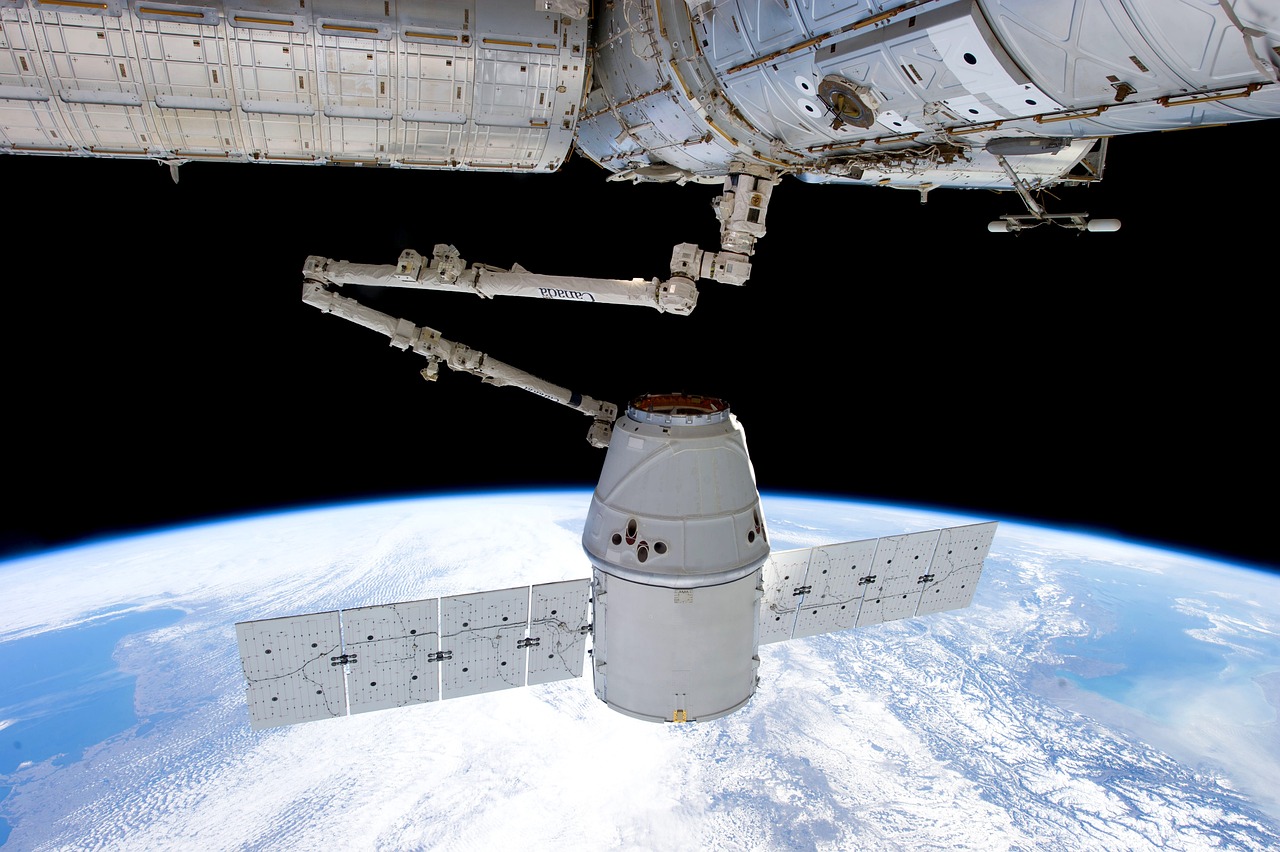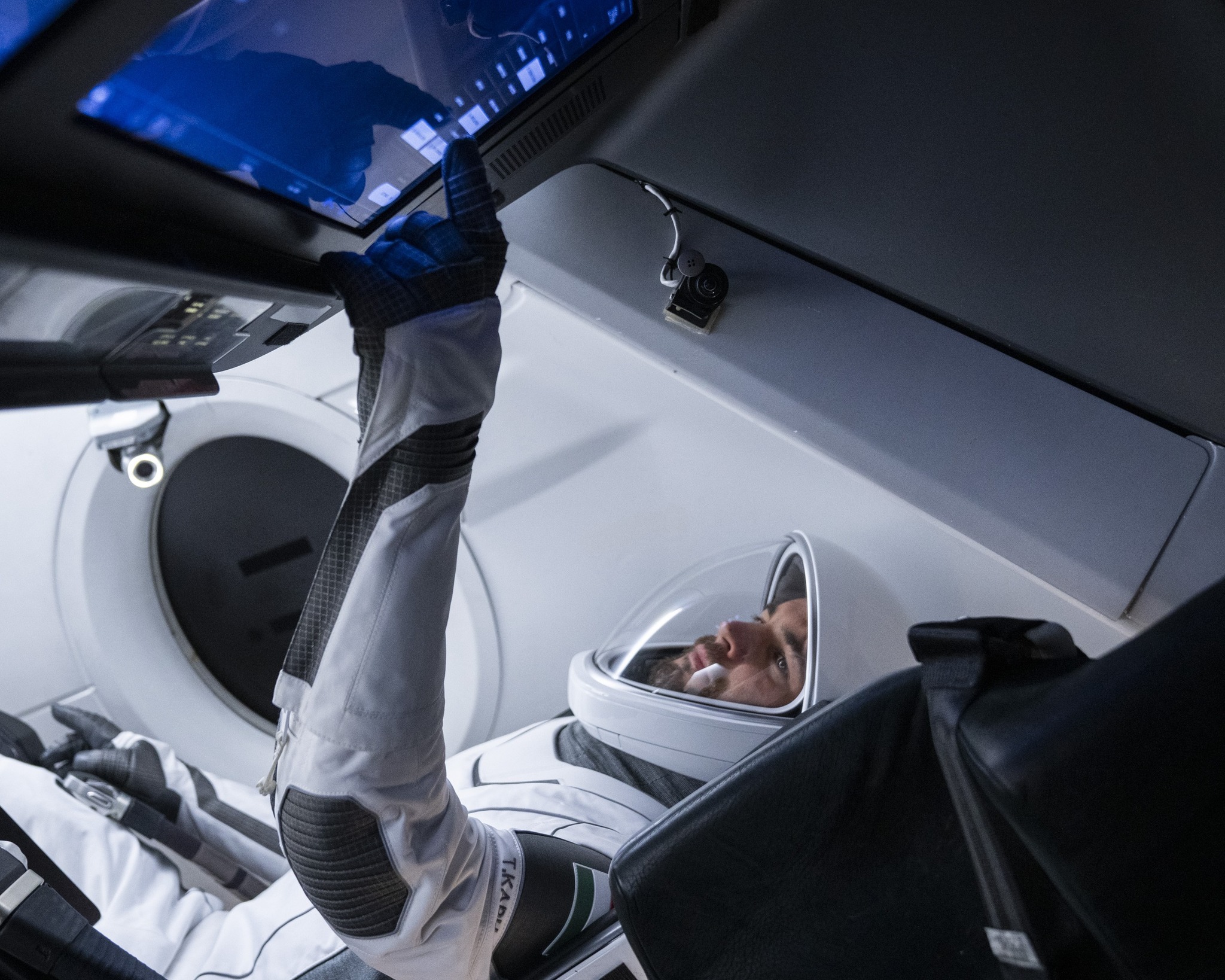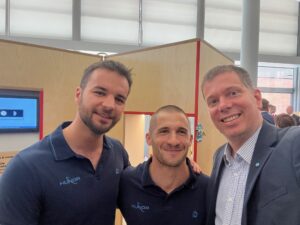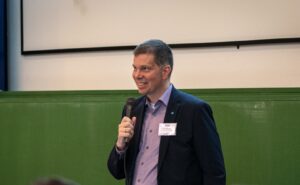
The country's space law is already under preparation.Continue reading

Today, Hungarian astronaut Tibor Kapu is set to depart for the International Space Station (ISS) as part of the Axiom Space Ax-4 mission – a historic event, 45 years after the last Hungarian space flight. Hungary Today spoke with László Bacsárdi, quantum communication expert and head of the Mobile Communication and Quantum Technologies Laboratory, and the program leader of the space engineering master program of the Faculty of Electrical Engineering and Informatics at the Budapest University of Technology and Economics (BME). As a recognized expert in space communications, he provided insights into the safety aspects of the mission, its scientific goals, and the significance of Hungarian space travel.

László Bacsárdi (Photo: Attila Róka/SPOT. Courtesy of László Bacsárdi)
Tibor Kapu is heading to the ISS today. How dangerous is this trip?
Manned spaceflight is always a challenging endeavor. Tibor Kapu will be part of a four-person crew participating in the Axiom Space Ax-4 mission. The number “4” indicates that there have already been three successful previous missions. Both Axiom Space and NASA have considerable experience in ensuring the comfort and safety of astronauts during spaceflight.
Thanks to significant technological advances, missions today are less prone to accidents such as those that occurred in the early days of space travel – think of the Apollo 1 tragedy or the two space shuttle disasters involving Challenger (1986) and Columbia (2003). Today’s systems are much more sophisticated.
Nevertheless, traveling to space is an encounter with a completely different physical environment, for which astronauts must be intensively prepared.
The selection of Tibor Kapu as part of the HUNOR (Hungarian to Orbit) space program was a comprehensive process involving numerous tests and training sessions. He is both psychologically and physiologically well prepared for the strenuous journey.
The Ax-4 mission patch symbolizes a unified perspective of Earth and space. The four ascending lines that converge at the International Space Station represent the four countries on the mission. The patch is further divided into three sections, reflecting the continents involved,… pic.twitter.com/3y7RyR21fZ
— Peggy Whitson (@AstroPeggy) April 17, 2025
Is there a risk of being stranded on the space station, as was recently the case with U.S. astronauts?
We live in the age of “New Space,” in which private players such as SpaceX are playing an increasingly important role with their own launch capabilities. The incident involving the U.S. astronauts was related to a test flight of a new spacecraft from Boeing. However, Tibor Kapu will fly with a proven SpaceX rocket, a Dragon spacecraft. This type has already completed successful missions.
The risk of being stranded on the ISS for technical reasons is therefore low.
Nevertheless, NASA’s motto applies: “Hope for the best, prepare for the worst.” That is why astronauts are prepared for almost every scenario, including survival training in case of an emergency landing. Of course, everyone hopes for a smooth mission. However, unpredictable factors such as weather conditions can affect the launch or return. There have been several instances where launches have had to be postponed. The landing can also be delayed if severe weather conditions prevail at the planned landing site. For this reason, most missions have not only a main landing site in the U.S., but also alternative landing sites around the world. Nevertheless, as with air travel, it is best if no deviations are necessary.
Tibor Kapu will conduct around 25 Hungarian experiments in ten different scientific fields on the ISS. How were these selected?
The Hungarian astronaut is traveling into space as part of the HUNOR program of the Ministry of Foreign Affairs and Trade. The scientific program was put together by the HUNOR organization under the HUN-REN Research Center.
The fact that a Hungarian, and a research astronaut at that, is flying into space again after 45 years is a great joy for everyone. Charles Simonyi, an American-Hungarian citizen, visited the International Space Station in 2007 and 2009 and conducted experiments, but he was more of a space tourist than a research astronaut.
When the HUNOR program was announced in 2021, a key aspect was to send not just a tourist, but an astronaut who could conduct scientific experiments.
This is crucial because, although researchers have many ideas for experiments, access to astronaut time on board the ISS is always critical and limited. Therefore, the astronauts’ time must be used efficiently.
As a Hungarian astronaut is flying and his trip is being financed by our country, Hungary has control over his space time. That is why a call for proposals was launched as part of the HUNOR program, inviting submissions of various experiment designs and proposals for public outreach activities. Examples include a planned radio contact with Tibor Kapu, during which he will answer questions from schoolchildren, and the opportunity for people to send their names and photos into space on a “boarding pass.” These measures serve to popularize space travel.
I can only comment on the experiments in general terms.
One of the criteria for selecting the experiments was the astronaut’s ability to carry them out on board the ISS. Tibor Kapu received intensive training and practiced the procedures. In one experiment, for instance, it is important to perform an activity rhythmically, so the experiment leader had a piece of music composed especially to set the tempo.
Another aspect is the transport of the experiments to the ISS. Logistics played a role because the experiments are subject to space and weight restrictions and the results also have to be transmitted back to Earth. All these factors limited the type of experiments that could be carried out.
One limitation was that our astronaut will not be going on a spacewalk,
which meant that experiments requiring outdoor work were ruled out. Another aspect that was taken into account when selecting the experiments was that they had to be scientifically sound and feasible within a relatively short period of time – from the acceptance of the application to the mission. In addition, all experiments had to be accepted and approved by NASA, as Tibor Kapu is flying with Axiom Space and a SpaceX rocket, but NASA plays a central role in this project.
A total of around 60 scientific experiments from 31 countries will be carried out during the mission, which is a record. The 25 Hungarian experiments are therefore outstanding in terms of numbers. Why are we providing more than a third of the experiments?
This is because, as the mission’s financier, Hungary has the astronaut’s time at its disposal, minus the mandatory activities (e.g. sleep and exercise) on the ISS.
Hungary is a member of the European Space Agency (ESA). There were also Hungarian applicants for the ESA astronaut selection process, but they were not accepted into the ESA program. A Polish astronaut, Sławosz Uznański-Wiśniewski, is traveling with Tibor Kapu, but he is not sent and financed by Poland, but by the ESA, hence his research programs are also determined by this agency.
Explore the research that HUNOR will be undertaking during #Ax4, which include monitoring crew radiation exposure and environmental conditions, as well as the studying how microgravity influences cognitive skills and motor functions. Learn more here: https://t.co/CAUvXjeKZG pic.twitter.com/76QynJrnzJ
— Axiom Space (@Axiom_Space) April 29, 2025
In recent decades, 140 Hungarian space devices have been launched into space as part of various space missions, either by other nations or as part of international missions. Is that a significant number for Hungary?
Absolutely. In mid-May, I took part in a European panel discussion on whether our region (Hungary, Slovakia, the Czech Republic, and Poland) can be described as “emerging” or already “developed” in the field of space travel. I expressed the view that
although the news mostly reports on space travel in America or China, significant achievements have also been made here in Hungary.
Hungarian space history began back in 1946 with Zoltán Bay’s moon radar experiment – a remarkable achievement given the post-war conditions in Budapest at the time. Since then, many results have been achieved, and thanks to domestic research and business developments, knowledge has been gained in several areas that could be described as unique in the world.
Unique knowledge and developments have been achieved in many areas, whether in materials science, space communications, or devices such as the “Pille” dosimetric measurement system, which was developed for Bertalan Farkas’ space flight and is still in use today in various versions.
The more than 100 devices with Hungarian participation – whether through companies or research institutes – are a source of pride.
Although there are countries with even higher numbers, Hungary has continuously launched new projects and development plans over the past ten years to create further space devices with Hungarian contributions, which is also encouraging to see.

The Hungarian research astronaut Tibor Kapu, the Hungarian reserve research astronaut Gyula Cserényi, and László Bacsárdi (L-R) (Photo: Courtesy of László Bacsárdi)
In April, the UNIverZOOM project for high schools was announced in collaboration between the Budapest University of Technology and Economics and the HUNOR program. The project enables students to conduct experiments on Earth in parallel with Tibor Kapu. What are the goals of this initiative?
I do not know the exact content of the experiments, but I think their beauty lies precisely in the fact that they can be carried out with the participation of high school students. The experiments in the fields of optics, magnetism, and materials testing can demonstrate how uniquely the laws of nature function in weightless space compared to Earth, where gravity is part of our everyday lives.
For instance, a drop of water floats in space instead of falling and takes on completely different forms. The same phenomena behave very differently on Earth. However, there may also be things that behave in space just as they do here. In my opinion, these comparisons can provide high school students with a very good basis for discussion. The undeniable goal of the experiments is to spark and strengthen young people’s interest in science.
You are the program director of the master’s program in space engineering technology at BME. How many students are currently enrolled in the program? Do you expect an increase in enrollment due to the popularity of Tibor Kapu’s mission?
The master’s program in space technology is an important addition in Hungary, as there are over 60 research institutes and companies in the domestic space industry, and this number is growing steadily, also due to start-ups. BME was a pioneer in creating this program in 2020, which started at our university in 2022.

László Bacsárdi (Photo: Boglárka Deli/SPOT, Courtesy of László Bacsárdi)
Our master’s program builds on our extensive knowledge of space technology. In 2012, the first Hungarian small satellite, Masat 1, was developed and launched at our university. The team from back then has been working on various small satellites ever since – now in smaller formats (5x5x5 cm), including SMOG-P (2019), SMOG-1 (2021), MRC-100 (recently) and currently the Hunity satellite. Other colleagues have been involved in various space missions, in the construction and manufacture of specific parts of planetary research probes. As a result, a great deal of space technology expertise has been accumulated at the university. We focused on this when creating our own master’s program in space technology.
When it was introduced in 2022, there were over 100 applicants, of whom 26 were accepted. Nineteen of these students completed their studies according to the curriculum in four semesters. We continue to accept new students each semester, with 10 to 20 students per academic year. Graduates of this program are able to understand the complex challenges of space technology, from development in space to operations on Earth. The Hungarian astronaut’s mission will certainly further increase interest.
Tibor Kapu spoke in a video about the Mars trip and how he would be delighted if his name appeared among the potential travelers in the event that the mission is realized in the foreseeable future. Do you consider a manned mission to Mars realistic in the near future?
A manned trip to Mars is definitely within the realm of possibility and will take place in the near future. The question is “when.”
There is no lack of technology to get to Mars, but rather the ability to ensure a safe return.
Safety is the top priority here. Initiatives such as “Mars One” from the 2010s, which planned one-way trips to Mars, highlighted the ethical and practical risks of such ventures.
As a member of the Space Generation Advisory Council, an international organization founded by the United Nations, I was involved in a workshop that addressed this issue. These projects made it clear that a trip to Mars should only be undertaken if the technological conditions for a safe return are in place.
A trip to Mars, similar to a very short mission to the space station, has several aspects. On the one hand, there is the question of whether we have the technology to send a spacecraft there, land it, and then launch it again and return it. We have some of this technology, possibly even all of it. In this respect, SpaceX is making considerable progress towards reaching Mars with the development of the Starship rocket.
Another important aspect is life support: sufficient air and food must be carried on board. Numerous experiments are investigating how this can be ensured on a longer trip to Mars. The handling of medication on long-term space flights is also being studied, as substances react differently in space and medication can expire more quickly than on Earth.
The third aspect is human resilience during this journey and the effects on the organism. Significant progress has been made in all three areas. It is now only a question of the development plan as to when we can actually set off for Mars. NASA had plans for a trip to Mars, and it remains to be seen how the new US administration will shape NASA’s involvement in manned missions to Mars. What is certain, however, is that Elon Musk has his sights set on a trip to Mars in the foreseeable future and is making good progress with various developments.
I am convinced that a trip to Mars could become a reality much sooner than Tibor Kapu retires.
Orsolya Ferencz, Ministerial Commissioner for Space Research, said that the history of the 21st century will be written in space. Do you share this view?
I completely agree with this statement. Our daily lives on Earth depend crucially on space infrastructure, especially satellites. Navigation satellites are obviously indispensable for finding our way around. But we also use atomic clocks on board navigation satellites to synchronize our various systems. A failure of navigation satellites could disrupt automated trading on stock exchanges, precision farming equipment, and air and rail traffic, for instance. In addition to navigation satellites, we also use communication and Earth observation satellites for a wide range of applications.
The development of space travel is increasingly shifting from a pure service provider role to securing and protecting this critical infrastructure in orbit. Access to or interference with satellites in low Earth orbit could cause massive civil and military problems.
In my view, our ever-increasing dependence on spacecraft makes it undeniable that space is a central arena for the development of the 21st century.
Featured photo via Facebook/Tibor Kapu